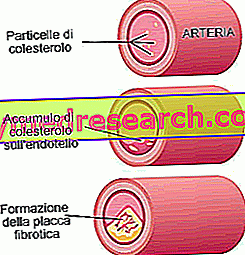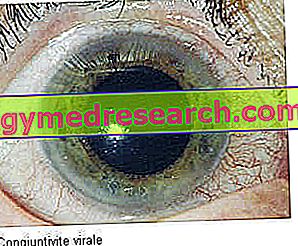Generality
Noradrenaline as a drug is used parenterally in emergency situations .

Norepinephrine - or norepinephrine, if you prefer - is a known endogenous catecholamine implicated in many body functions. More in detail, it is an important neurotransmitter, characteristic of the sympathetic nervous system and, as such, capable of interacting with adrenergic receptors, both alpha and beta type.
When it binds to its own receptors, norepinephrine is able to influence the activity of different organs and tissues; for example, it induces an increase in heart rate, increases blood flow to the skeletal muscles, increases the release of glucose from energy reserves.
The use of noradrenaline as a drug is justified by the action it is able to perform at a cardiovascular level. However, it should be pointed out that in drugs administered parenterally, norepinephrine is not found pure, but in the form of noradrenaline tartrate .
Examples of Specialties Medicinal products containing Noradrenaline
- Noradrenaline tartrate Aguettant®
- Noradrenaline tartrate Monico®
- Noradrenaline tartrate SALF®
Therapeutic indications
When is the use of Norepinephrine indicated?
The use of parenteral noradrenaline is indicated in the treatment of hypotensive emergencies and in emergency situations in which it is necessary to resuscitate the patient in the event of cardiac arrest .
Warnings
Warnings and Precautions for the use of Noradrenaline
Before giving noradrenaline as a drug to a patient, the doctor should know if the latter:
- Suffers from cardiovascular diseases of any kind;
- Is being treated with tricyclic antidepressant drugs or monoamine oxidase inhibitors (MAOIs);
- He must undergo a surgical procedure in which anesthesia will be performed with drugs such as halothane or cyclopropane;
- He suffers from hyperthyroidism;
- It has reduced levels of oxygen in the blood (deep hypoxia), or high concentrations of carbon dioxide (hypercapnia);
- He is allergic to sulphites, especially if he suffers from asthma.
The administration of norepinephrine should be carried out by a doctor or nurse in a vein of great caliber of the arm or leg, carefully choosing the injection site in order to minimize the risk of extravasation and tissue necrosis. In this regard, it should be noted that in elderly patients suffering from occlusive vascular disorders, the administration of norepinephrine should not occur at the level of the veins of the legs, since there is an increased risk of undergoing tissue necrosis.
Please note
Intake of norepinephrine as a drug in the absence of therapeutic necessity is doping and can result in positive doping tests .
Pharmacological Interactions
Interactions of Noradrenaline with Other Drugs
Noradrenaline as a drug should not be given in combination with:
- Anesthetics such as cyclopropane and halothane (can excessively increase cardiac excitability);
- Tricyclic antidepressants and monoamine oxidase inhibitors (may increase the effects of norepinephrine);
- Neuroleptics (can reduce the effects of norepinephrine);
- Dihydroergotamine and linezolid (can cause an excessive increase in blood pressure);
- Entacapone and guanethidine (increases the effects of norepinephrine);
- Antibiotics;
- Anti-epileptics.
Side effects
Side Effects Caused by the Assumption of Noradrenaline
Like any other active ingredient, noradrenaline used as a drug is able to trigger side effects, although not all patients manifest them, or manifest them in the same way. In fact, the type and intensity of any side effects may vary from individual to individual.
However, the main side effects that may occur following the intravenous administration of norepinephrine as a drug will be reported below.
Nervous system disorders and psychiatric disorders
Following administration of norepinephrine as a drug may occur:
- Feeling of fear;
- States of anxiety;
- agitation;
- Psychosis;
- Insomnia;
- Irritability;
- Tremor;
- Confusion;
- Weakness.
Cardiovascular disorders
Intravenous administration of norepinephrine as a drug could cause:
- Hypertension;
- Reflex bradycardia;
- arrhythmias;
- Palpitations;
- Anginal pain;
- Cardiac arrest and sudden death.
Furthermore, the administration of the active substance in question could also cause thrombosis due to catecholamine-induced platelet aggregation.
Skin and subcutaneous tissue disorders
If extravasation occurs during the administration of norepinephrine as a drug, it is possible to undergo tissue necrosis. In such a case it is necessary to carry out an infiltration with 10-15 ml of saline solution containing 5-10 mg of phentolamine. This maneuver must be practiced in order to try to prevent tissue necrosis and tissue loss.
Metabolism and nutrition disorders
Following the use of sympathomimetic drugs such as norepinephrine, the glucose metabolism can be altered.
Renal and urinary disorders
After administration of norepinephrine as a drug it is possible to experience a decrease in creatinine clearance, a decrease in insulin clearance, difficulty in urinating and urinary retention.
Other Side Effects
Other side effects that may occur after taking norepinephrine as a drug are:
- Breathing difficulties;
- Nausea;
- He retched;
- hypersalivation;
- Pulmonary edema;
- Cerebral hemorrhage.
Overdose
In the case of overdose of norepinephrine symptoms such as:
- High increase in blood pressure (hypertension);
- Reflex bradycardia;
- Circulatory collapse.
However, since norepinephrine as a drug can only be administered by specialized healthcare personnel, the occurrence of an overdose is quite rare, although it is still possible.
Action mechanism
How does Norepinephrine work?
Once administered intravenously, norepinephrine is able to bind to adrenergic receptors thus performing its function at the cardiovascular level. More in detail, through the link with the type 1 alpha-adrenergic receptors located on the blood vessels, it induces a vasoconstriction that favors the increase in blood pressure .
At cardiac level, however, norepinephrine binds to type 1 beta-adrenergic receptors, activating them and inducing a positive inotropic effect and, initially, a positive chronotropic effect .
However, it is good to remember that:
- Increased blood pressure can cause a reflex reduction in heart rate (reflex bradycardia);
- Vasoconstriction can lead to a decrease in blood flow to the kidneys, liver, skin and smooth muscles;
- The constriction of blood vessels could cause haemostasis and / or necrosis.
Method of use and Posology
How to take Noradrenaline
Norepinephrine as a drug is available as a concentrate for solution for infusion . The dose of medicine to be administered must be established by the doctor on an individual basis for each patient.
However, the initial dose usually given by intravenous infusion is 8-12 micrograms per minute. The flow velocity must be adjusted so as to maintain blood pressure at normal values. The maintenance dose usually used, on the other hand, varies from 2 to 4 micrograms per minute, up to a maximum of 68 mg a day.
In any case, the drug must necessarily be administered by a doctor or nurse.
Pregnancy and breastfeeding
Can Norepinephrine be taken during pregnancy and during breastfeeding?
Noradrenaline as a drug is able to reduce placental perfusion causing fetal bradycardia; in addition to this, the active ingredient easily crosses the placenta and can stimulate uterine contractions or decrease blood flow causing fetal hypoxia.
For this reason, the use of noradrenaline as a drug in pregnant women is generally contraindicated, except in cases where the doctor considers the administration of the drug to be absolutely necessary and indispensable.
As a precautionary measure, since there are no data on the subject, the use of noradrenaline as a drug is generally contraindicated even in breast-feeding mothers.
Contraindications
When Noradrenaline should not be used
The use of noradrenaline is contraindicated in the following situations:
- In case of a known allergy to norepinephrine - which we remember to be in the form of noradrenaline tartrate - or to any of the excipients contained in the medicinal product to be used;
- In patients suffering from hypotension caused by a reduced volume of circulating blood (hypovolemia);
- In patients with Prinzmetal angina;
- In patients undergoing anesthesia with drugs capable of sensitizing cardiac tissue;
- In pregnant women;
- In breastfeeding mothers.



